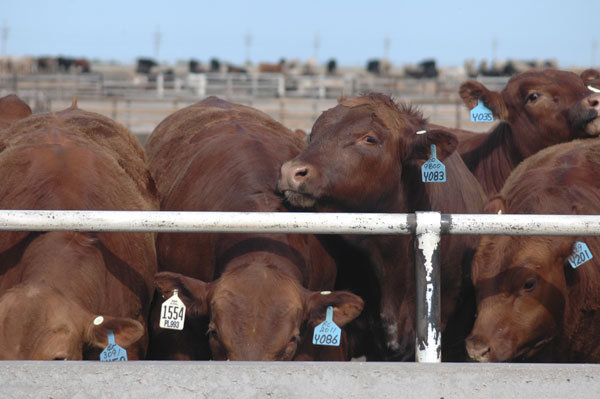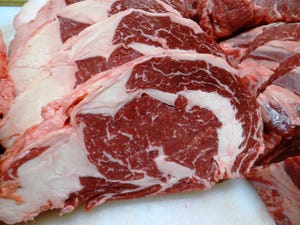August 5, 2014

Hard as it is for many of us to fathom, there is no fundamental reason to believe a massive cattle price correction is lurking amid the brush. After all, cattle numbers are too low and beef demand is too strong.
“It seems unlikely that prices will continue to move higher as fast as they have in the last 6-8 weeks,” said Derrell Peel, Oklahoma State University Extension livestock marketing specialist, in the second week of July. “I don’t see any major unraveling. I look for sideways price movement in the second half of the year, and a consolidation of the gains that have been made.”
The worst-case scenario that Stan Bevers, Texas AgriLife Extension agricultural economist, could see was 5-weight calves bringing $210-$220/cwt. this fall, compared to $250-$260 in late June. Just as easily, he says there could be additional support depending on how many heifers are held back as replacements and how many calves trade earlier than normal.
“I don’t think we’ve ever before had a fundamental shortfall of beef production for such an extended period of time,” Peel explains. “Not only do we have a limited quantity of beef today, but most people understand that the quantity will be limited for at least the next couple of years.”
As for demand, Peel points out, “We’ve never been in this part of the demand space before.” He explains there is growing evidence that consumers are less price-sensitive than previously thought when it comes to beef, and that demand is more inelastic.
The short version goes like this: The most price-sensitive consumers were priced out of the beef market during the Great Recession. And while others may still be trading down within the beef market, those who are left know that beef will cost more — and are willing to pay for it.
Granted, the full impact of rising wholesale beef prices hasn’t caught up with all consumers. But the above ignores the growing international demand for U.S. beef. In fact, beef export value per head of fed slaughter set another new record in May at $279.39, according to the U.S. Meat Export Federation.
Obviously, none of this speculation is certainty. The need for risk management has never been greater. The astronomic level of input costs and increased price volatility provide more incentive to manage harder.
“High cattle prices now should not be viewed as a substitute for pursuit of better cattle management and quality,” Peel says. “While most any animal standing will bring record dollars today, there is considerable additional value potential in improved genetics and management, and with alternatives such as preconditioning, adding stocker weight gain and marketing heifers differently and separately from steers.”
That’s before considering the price and opportunity cost of replacement females.
When Bevers ran the numbers in late spring, the value of a retained heifer entering the cowherd in his part of the world was $165/cwt. (basis 750 lbs.). The feeder market for her was $173/cwt. He can’t remember another time when heifers had less value to the cow-calf producer than to the beef market.
“Producers tempted by high feeder prices now, and cautious about high breeding-animal values, face the greater risk of waiting to see how long high prices last, then jumping in and being among the last to pay high prices for heifers or cows,” Peel says.
Plus, there’s reason to believe the cattle cycle the next time around could be all but invisible, with muted change rather than the traditional hard swings in price and inventory guiding production.
“The temptation to sell everything at current market prices should not cloud the implementation of a well-developed production and marketing plan for the next several years,” Peel says. “Rebuilding is likely to be a multiyear process and should be guided by a plan based on resource management, as well as animal production and marketing considerations.”
Other trending stories at BEEF:
Take A Virtual Tour: World's Largest Vertically Integrated Cattle Operation
9 Tips For Preventing Pasture Bloat In Cattle
Cows Out On Pasture | 80+ Grazing Photos From Readers
5 Trending Headlines: Mobile Shade For Cattle & Animal Ag Wins An Antibiotic Lawsuit
Parasite & Pest Management Products To Consider
New Stocker Index Prices Stocker Calves More Precisely
7 U.S. Ranching Operations Are "Best of the Best" In Stewardship
You May Also Like



